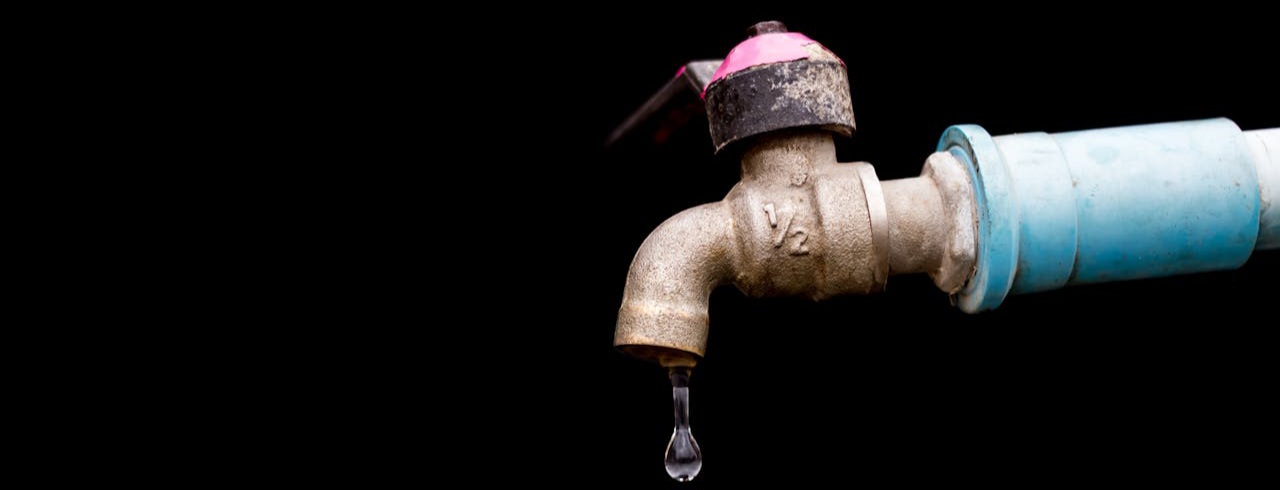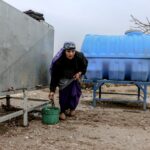Is It Safe to Drink Tap Water in Benin Republic?

“Is it safe to drink from this tap?” is a question most people ask when they get to new environments. This seemingly simple question actually has a complex answer that affects not just tourists, but the daily lives of over 12 million Beninese people.
So, to answer – no, tap water in Benin Republic isn’t generally safe to drink without additional treatment. But there’s much more to this story than a simple yes or no answer.
Understanding Benin’s Water Situation
Benin, like many West African countries, faces significant challenges when it comes to providing clean drinking water to its population. While the government has made impressive strides in recent years, the reality on the ground still presents many concerns.
Think about the last time you turned on your tap at home – you probably didn’t think twice about drinking the water that came out. But in Benin, it’s not that straightforward. The water supply system here tells a tale of two very different experiences: urban versus rural life.
The Urban Story
In cities like Cotonou, Porto-Novo, and Parakou, most homes and buildings have access to piped water. The national water company, SONEB (Société Nationale des Eaux du Bénin), manages these systems. They do a decent job of initial water treatment, but things get problematic.
The pipes carrying this water are often old and damaged. Imagine trying to keep water clean while sending it through a system that’s full of holes. That’s essentially what’s happening here: during the rainy season, these damaged pipes can let in contaminated groundwater. It’s like having a clean glass of water but drinking it through a dirty straw.
Rural Realities
Head out to the countryside, and you’ll find a completely different situation. Many rural communities rely on wells, boreholes, and sometimes even surface water from rivers or lakes. While some villages have modern water points installed by NGOs or government projects, others still depend on traditional water sources that their ancestors used for generations.
A Deeper Look at Water Sources in Benin
Benin relies on several water sources, each with different levels of safety and accessibility. The country’s water supply comes from groundwater, surface water, and piped systems, but not everyone has equal access to clean drinking water.
Groundwater (Wells and Boreholes)
In many parts of Benin, especially rural areas, people depend on wells and boreholes for water. These underground sources can be relatively clean, but they are not always free from contamination. Poorly constructed wells can allow bacteria, parasites, and harmful chemicals from nearby latrines, farms, or waste disposal sites to seep in. Boreholes that reach deeper water sources tend to be safer, but maintenance is a challenge. If a pump breaks down, entire communities may be forced to return to unsafe water sources.
Surface Water (Rivers, Lakes, and Streams)
Some communities, particularly in remote areas, still rely on surface water from rivers and lakes. The Ouémé River, for instance, serves as a water source for many. However, surface water is often the most dangerous to drink because it is exposed to pollution from human and animal waste, farming chemicals, and industrial runoff. Many waterborne diseases, including cholera and dysentery, originate from contaminated surface water.
Piped Water (Urban and Semi-Urban Areas)
In larger cities like Cotonou and Porto-Novo, piped water is more common. The national water company, SONEB, treats and distributes water through a network of pipes. While the treatment process removes most harmful substances, aging infrastructure is a major problem. Leaks and cracks in pipes allow bacteria and pollutants to enter the water before it reaches households. During the rainy season, floodwaters can worsen the contamination, making even treated water unsafe.
The Health Impact
This water situation isn’t just an inconvenience – it has real health consequences. Waterborne diseases like typhoid, cholera, and bacterial infections are unfortunately common in Benin. Local hospitals regularly treat cases that stem directly from consuming unsafe water.
What many of us consider a basic daily task requires careful consideration and planning for Beninese families. Every sip of water comes with a decision to either treat or not treat. This statement may seem blown out of proportion, but this and more is the reality of most families in Benin Republic.
Cultural Perceptions of Water Safety
Water safety isn’t just a scientific issue – it’s also influenced by cultural beliefs, habits, and local experiences. In Benin, attitudes toward tap water vary based on personal experiences, education, and traditional beliefs.
Traditional Views on Water
In some rural communities, traditional water sources like streams and wells are considered pure because they have been used for generations. Elders who grew up drinking from these sources without falling sick may see modern warnings about water safety as unnecessary. However, as pollution and population growth increase, these once-safe sources are now more likely to be contaminated.
Trust in Government Water Systems
Many urban residents remain skeptical about the safety of tap water, even in cities where treatment plants exist. Some people boil or filter their water not just for safety but also because they believe treated water still contains chemicals that could be harmful. Others prefer bottled water, believing it to be the safest option, even though not all bottled water brands meet high quality standards.
Use of Herbal Remedies
Some Beninese people believe that herbal remedies can help protect against waterborne illnesses. While certain traditional herbs may have health benefits, they cannot fully replace clean drinking water and proper sanitation.
Economic Factors
Many families make decisions about water based on what they can afford. Boiling water requires firewood, charcoal, or gas, which costs money. Filters and bottled water are even more expensive. As a result, some people take the risk of drinking untreated tap or well water simply because they cannot afford safer alternatives.
What’s Actually in the Water?
The tap water in Benin often contains:
- Bacterial contamination from sewage leaks.
- Chemical pollutants from industrial activities.
- Natural sediments and minerals.
- Agricultural runoff in some areas.
- Microorganisms that can cause various illnesses.
Making Water Safe: Local Solutions
Beninese people have developed various strategies to make their water safe for drinking. These methods have become such a normal part of daily life that they’re practically cultural practices:
1. Boiling: Many families boil their water before drinking it. It’s effective, but uses a lot of fuel, which can be expensive.
2. Water Tablets: Chlorine tablets are widely available in local pharmacies and shops. They’re relatively cheap and easy to use.
3. Filter Systems: Some households use ceramic or sand filters. These are becoming more popular, especially in urban areas.
4. Bottled Water: In cities, bottled water is readily available but can be expensive for regular use. It’s mainly used by tourists and wealthier residents.
Government Efforts and Challenges
The Beninese government isn’t sitting idle on this issue. They’ve launched several initiatives to improve water quality, including:
- Upgrading urban water treatment facilities.
- Installing new water points in rural areas.
- Working with international organizations to expand access to clean water.
- Training local technicians in water system maintenance.
However, progress is slow due to various challenges:
- Limited financial resources.
- Rapid population growth.
- Climate change impacts.
- Aging infrastructure.
Practical Advice for Different Groups
For Tourists:
- Stick to bottled water from reliable brands.
- Avoid ice in drinks unless you’re sure it’s made from purified water.
- Use bottled water for brushing teeth.
- Be careful with fresh vegetables that might have been washed in tap water.
For Expats:
- Invest in a good water filter system for your home.
- Have a backup plan (stored bottled water) for when tap water is unavailable.
- Learn local water treatment methods.
For Local Residents:
- Continue using proven water treatment methods.
- Maintain good storage practices for treated water.
- Regular cleaning of water containers.
- Teaching children safe water habits.
Looking to the Future
The water situation in Benin is gradually improving, but it’s a slow process. New projects are underway to upgrade water infrastructure, and there’s increasing awareness about water safety. However, it will likely be years before tap water becomes consistently safe to drink throughout the country.
What Can You Do?
Whether you’re planning to visit Benin, moving there, or are just interested in helping, there are ways to make a difference:
- Support organizations working on water projects in Benin – Aqua Maya is a perfect example.
- Share knowledge about water safety.
- If visiting, bring water purification methods to reduce plastic bottle waste.
- Learn about and respect local water conservation practices.
Conclusion
While tap water in Benin isn’t safe to drink straight from the source, there are many ways to make it safe. The situation is complex but manageable with the right knowledge and precautions. The country is working hard to improve its water systems, and every year brings new progress.
Remember, what we take for granted in many parts of the world – clean, safe tap water – is still a work in progress in Benin. Understanding this not only helps us stay healthy, but also appreciate the daily realities of life in this vibrant West African nation.
Sources
1. https://benin.sdgindex.org/
2. https://www.sciencedirect.com/science/article/abs/pii/S1474706508000697






